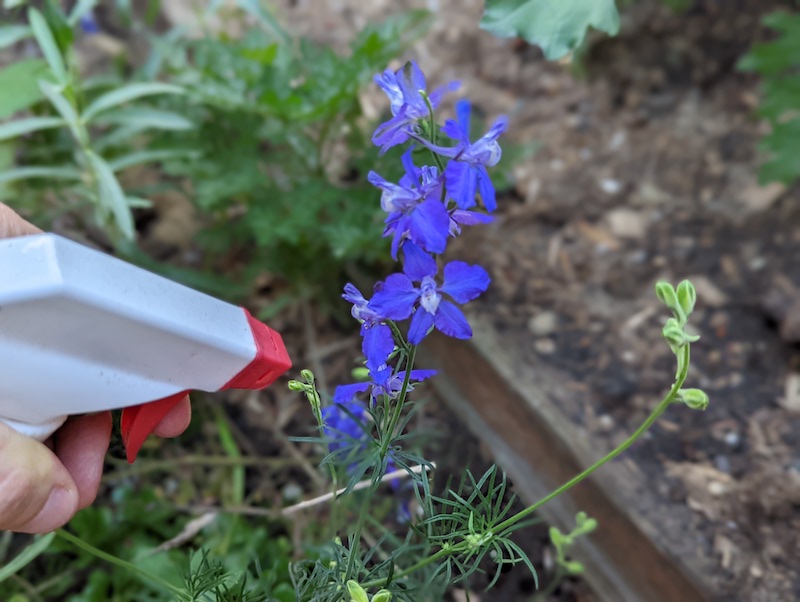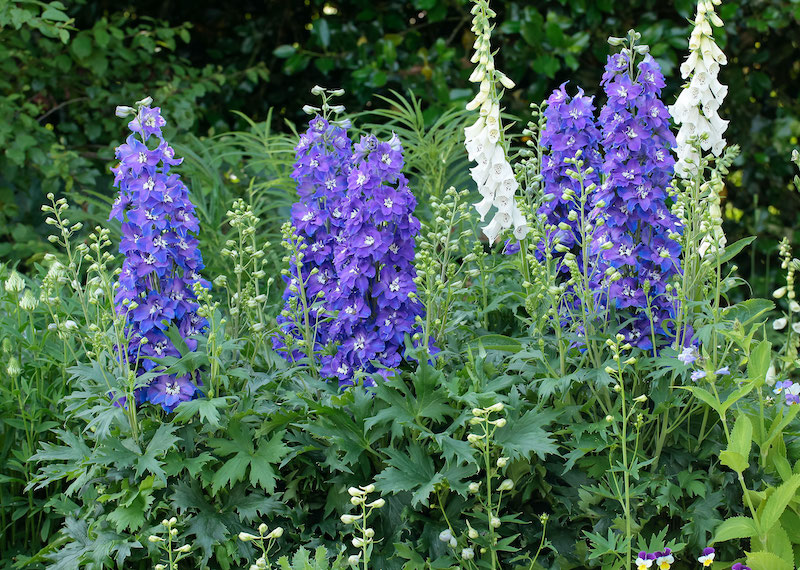Larkspur, also known as Delphinium, may seem delicate and vulnerable to damage, but the good news is that deer rarely browse this highly ornamental plant. Deer are likely to pass them up for their favorite meals including hostas, daylilies, and perennial geraniums. Both annual and perennial varieties of Delphinium are considered deer resistant and are rarely disfigured or harmed by deer browsing.

Larkspur is most susceptible to deer damage early on in the spring as new growth emerges. If you observe ragged ends on new growth, deer are a likely responsible. Any leaves with asymmetrical holes have likely been damaged by snails or slugs.
According to Rutgers University, annual Larkspur is considered Rarely Damage on their rating scale from Rarely Damaged to Frequently Severely Damaged, meaning deer are not likely to damage this plant. Perennial Larkspur is ranked Seldom Severely Damaged by deer and may need some protection.
| Rarely Damaged |
| Seldom Severely Damaged |
| Occasionally Severely Damaged |
| Frequently Severely Damaged |
Keeping Deer Away From Larkspur
There are many different ways to protect plants from deer browsing. If deer are making a snack of your Larkspur, the quickest solution is to temporarily cover the plant with bird netting or horticultural fabric. These floating covers allow the plant to continue growing while protecting it from grazing. Creating temporary cages from hardware cloth and metal stakes will also protect developing plants.
Deer repellents can work in the short-term. They need to be reapplied after rains and watering. Deer may become accustomed to the smells over time. You can switch between sprays with a bitter taste and those with a strong scent to keep the deer guessing. Sometimes growing the vulnerable plant in a high-traffic area, such as near a house, patio, or deck, is sufficient for deterring deer.

Will Larkspur Come Back After Deer Eat Them?
Larkspur are much tougher than their fluffy flowerheads might suggest. If a mature plant is severely damaged early in the growing season, new shoots should appear and replace the damaged stems. If the damage occurs after late summer, the plant will send all of its energy into the root system to prepare for dormancy. Any damage caused by deer is easily pruned out to clean up the plant and lower the risk of pests and diseases.

Sources: Rutgers New Jersey Agricultural Experiment Station ‘Landscape Plants Rated by Deer Resistance’ 2018
 |
Author Robbin Small - Published 8-22-2022 |
